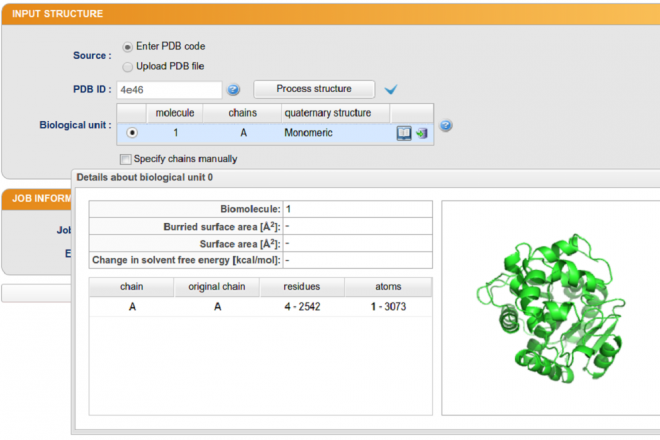
FireProt Web Portal
Automating a search for places suitable for stabilisation within the protein structure is not easy. Since the modification changes the individual amino acids, which are the building blocks of the protein, it could lead to changes in its other properties as well. Protein stabilisation is a relatively complex process, but experts can now get help from the FireProt web portal.The web service can highlight places in the protein structure that could be modified to stabilise the protein. Automating a search for places suitable for stabilisation within the protein structure is not easy. Since the modification changes the individual amino acids, which are the building blocks of the protein, it could lead to changes in its other properties as well – including those that prompted its use in the first place.
However, the whole process of identifying the right places and picking a new amino acid for the modification is much more complex. The website comprises 16 computational tools and it combines them to arrive at the most suitable modifications. These are mostly readily available third-party software applications, tools that help find similar sequences in various proteins or identify evolutionarily conserved sequences, and protein databases. The user does not need to know how the individual tools work or how to install them and set them up. Users can simply open the website and enter the parameters for the protein they want to modify. Then they just have to wait to be notified that the calculation has finished.
These calculations are very complex and are only made possible by using the CERIT-SC computing capacity running the infrastructure for storing and analysing biological data.
The tool is only the second in the world to stabilise proteins using multiple mutations and the demand was high right from the start. During the first month, the website was accessed six hundred times and over a hundred users have already used it for their calculations.
It is presumed that the factor could help with hard-to-heal wounds, such as burns or diabetic wounds, and it is already being developed for these purposes by Enantis, the biotechnology spin-off of Masaryk University.
This work was supported by the project OP RI ELIXIR CZ – Czech National Infrastructure for Biological Data LM2015047.
